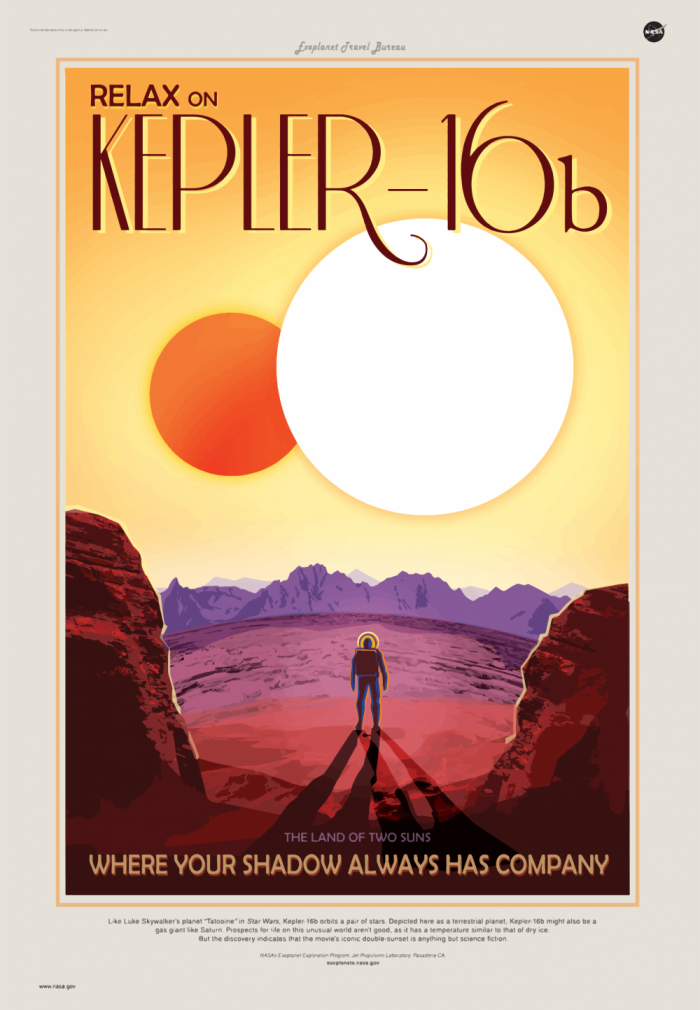Imagine waking up in the morning to see not one, but two or even more suns rising above the horizon! Science fiction? Not quit!? Although we, the earthlings, are not likely to acquire another star to marvel at, some other planetary systems boast multiple stellar objects at their centers.
We know that single stars make up only about a half of stellar population. Which means another half is multiple star systems. A third of them are estimated to be binaries and a twelfth are triples.
In early days of exoplanet search, when astronomers looked for planets orbiting around other Suns, they excluded these multi- star systems from their surveys. They thought the conditions on these planets would be so bad and their orbits so unstable (thanks to the constant pull from a few stars at once) that any planet crazy enough to orbit a group of stars would be soon either kicked out of the system or destroyed.
As it turned out, nothing can be further from the truth!
Gliese 667
Take Gliese 667, for example. Gliese 667 is a well studied triple star system in the constellation Scorpius, 22 light years away from the Earth. Gliese 667 consists of a binary (stars A and B) and a red dwarf (star C). The star C is orbited by 6 or 7 planets including three “super-Earths” Gliese Cc, Gliese Cf and Gliese Ce (you see, scientists are not very imaginative when it comes to naming exoplanets). The super-Earths are located in the star C’s habitable zone (aka Goldilocks zone). That means they are not too close to the star, not to far away, but just the right distance for the surface water (if there is any) to stay liquid! Moreover, the planets are probably tidally locked* to their star, so that they always face Gliese C with the same side.
*The article Life on a tidally-locked planet will tell you more about how tidal-locking can affect habitability. But long story short: it’s no good!
Could aliens possibly live on any of these Gliese planets?
Or maybe on other planets around multiple star system?
So far astronomers identified 32 triple star systems with planets and quite a number of planetary systems around binaries. A total number of planets orbiting around a group of stars discovered to date is over a hundred (and counting!) These findings make scientists and SETI enthusiasts very hopeful because every planet discovery increases our chances to spot the one with the “just right conditions” and ultimately the one with life on it. Not to mention it is just really cool to see all those weird planet worlds so different from ours. The studies suggest that having more than one Sun increases the size of the Goldilocks zone too. Perfect!
Can we tell which multiple star systems possibly have planets?
So…now that we know that there can be planets in multiple star systems, we naturally ask ourselves:
- Can we predict which multi-star systems are likely to have planets?
- Can we look at a number of binaries, triple systems and even higher order systems and pick out those that have a “kind enough environment” (whatever that means) to be home to planets?
The answer to both questions is YES! Planets can not exist in just any star system, but only in those with the right parameters. Depending on characteristics, like configuration of the multiple star system itself, masses of individual stars, eccentricities of their orbits and so on, astronomers can figure out if a multi-star system can potentially have planets.
So which star systems are good for planets and which are not so good?
Stay tuned and find out! Next we will explain how stars in a multi-star system are organized, what choice of orbits planets have and which configurations create stable orbits (and therefore are good for planets)!
Meanwhile, if you have any questions or comment, please let our space dome team know! Or visit one of our interactive presenter-led star dome shows and learn more about space and space exploration!

